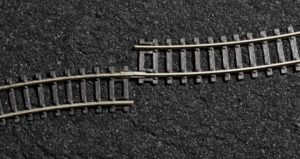
The Last Class Session
By the time the end of the course rolls around, it’s hard to think creatively about what to do on the last day. Depending on the course, the last day may be accompanied with feelings of joy, sadness, relief, or all three.

By the time the end of the course rolls around, it’s hard to think creatively about what to do on the last day. Depending on the course, the last day may be accompanied with feelings of joy, sadness, relief, or all three.
When creating course materials, it is important to be as inclusive as possible. A common way of working to ensure that materials respond to different approaches to learning is to use Universal Design for Learning (UDL), which proposes inclusive course design. It is a framework

I continue to be concerned that we don’t design learning experiences as developmentally as we should. What happens to students across a course (and the collection of courses that make up a degree program) ought to advance their knowledge and skills. Generally, we do a

As noted in the Teaching Professor Blog post, student responsibility for learning can happen in three different arenas. First and foremost, students are responsible for their learning. Teachers can encourage and support learning endeavors in a variety of ways, but students must do

“If you know the content, you can teach.”
How many of us have heard this sentiment before? How many of us believe it ourselves?
It is easy to assume that a content expert is automatically qualified to teach a course on his or her
It’s the beginning of another academic year, and that means lots and lots of last-minute course preparation. Perhaps it’s not the best time to propose course redesign projects, but how many course assignments, problem sets, exam formats, or paper topics haven’t been changed for some
Many of our course revisions happen without much planning. A new idea comes down the pike, an interesting technology option becomes available, a colleague shares a strategy that effectively deals with an issue, and we just use it! So, the course evolves and changes but
Collaborative course development is a course design model where “students are asked to play more formative, active roles than in traditional models, with the intent of vesting students in their educational processes” (Aiken, Heinze, Meuter, & Chapman, 2016, p. 57). The theoretical foundation for the

A recent issue of Outside magazine recounts Charles Bethea’s attempt to run a sub-five-minute mile. At age 35 and fit, though not an elite athlete, Bethea’s goal is far short of the world record of 3:43. And although many runners break the five-minute barrier, it’s

Mistake # 1 – Let content dictate instructional decision making.
Marshall Gregory, an English professor at Butler University, has written a fine essay that explores the role of content in learning. In the excerpt below, he discusses why we have students learn certain content. Some